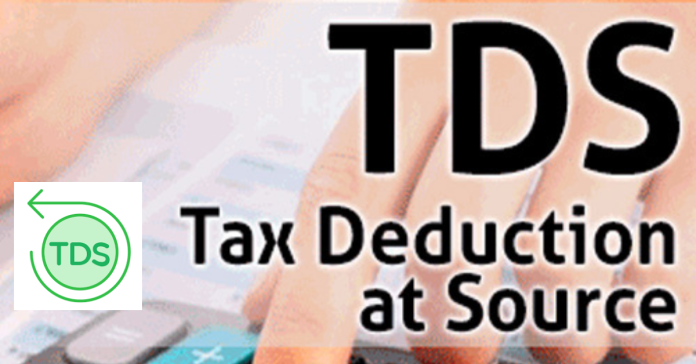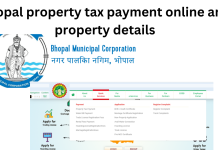In the realm of income tax, Tax Deducted at Source (TDS) plays a pivotal role. It’s a mechanism where a portion of income tax is deducted by the payer at the time of making specific payments. In this comprehensive guide, we delve into the intricate details of TDS as per the provisions outlined in the Income Tax Act.
Budget 2023 Updates Impacting TDS
- Section 194BA: Introduction of TDS on income generated from online gaming.
- Section 196A: Non-residents earning income from mutual funds in India, commencing April 1st, 2023, can furnish a Tax Residency Certificate to avail of TDS benefits as per the tax treaty rate.
- Section 192A: Reduction of TDS rate to 20% from the maximum marginal rate on PF withdrawal for employees lacking PAN.
- Section 193: Elimination of TDS exemption on interest from listed debentures, necessitating tax deduction on such specified securities’ interest.
- Section 194N: Increase in TDS threshold on cash withdrawal by co-operative societies to Rs 3 crore from April 1st, 2023.
Meaning of TDS
TDS, an acronym for Tax Deducted at Source, refers to the income tax subtracted from payments like rent, commission, professional fees, salary, and interest at the time of disbursement. While the recipient of income typically shoulders the income tax responsibility, TDS provisions ensure advance deduction by the payer. Consequently, the recipient receives the net amount post-TDS deduction. The gross amount is then added to the recipient’s income, with TDS adjusted against the final tax liability, facilitating efficient tax collection and transaction monitoring by the government.
Illustrative Example of TDS
Let’s consider Shine Pvt Ltd, which pays Rs 80,000 monthly rent for office space. With a mandated 10% TDS, Shine Pvt Ltd deducts Rs 8,000 as TDS, disbursing the remaining Rs 72,000 to the property owner. Here, the owner, as the income recipient, adds the gross amount of Rs 80,000 to their income while crediting the deducted Rs 8,000 against their final tax dues.
TDS Deduction Criteria and Responsibility
Any entity making specified payments outlined in the Income Tax Act is obligated to deduct TDS during payment. However, individuals or Hindu Undivided Families (HUFs) with business or professional sales below Rs.1 crore or Rs.50 lakhs, respectively, are exempt from TDS deductions. Notably, individuals and HUFs making rent payments exceeding Rs 50,000 monthly must deduct TDS at 5%, even without tax audit liability. Additionally, they needn’t apply for a Tax Deduction Account Number (TAN). Employers and banks typically deduct TDS at slab rates and 10%, respectively, or 20% sans PAN information.
Adjustments and Refunds
Submission of investment proofs to employers, resulting in taxable income below the limit, obviates tax liability and subsequent TDS deductions. Likewise, Form 15G and Form 15H submission to banks, with income below taxable thresholds, prevents TDS deduction on interest income. In cases of missed proof submission or premature TDS deductions, filing returns enables refund claims, thus ensuring compliance with taxation norms.
Open Plots Near Hyderabad
TDS Deposit Deadlines
TDS obligations mandate remittance to the government by the 7th of the subsequent month. For instance, TDS deducted in June necessitates payment by July 7th, with a grace period till April 30th for March deductions. Property purchase-related TDS payments adhere to a deadline of 30 days from the month-end of deduction.
Understanding TDS intricacies is paramount for individuals and entities alike, ensuring adherence to tax regulations and facilitating seamless financial operations.
Also Read: A Step-by-Step Guide on UAN Login and EPFO
How to Deposit TDS?
Tax Deducted at Source (TDS) must be deposited via the Income Tax Portal using TAN login credentials. The direct tax payments facility has transitioned from OLTAS ‘e-payment: Pay Taxes Online’ to the e-Pay Tax facility on the Income Tax Department’s e-filing portal. To make direct tax payments, including TDS, visit the Income Tax Department’s website at https://www.incometax.gov.in/ and select the ‘e-Pay Tax’ option.
When and How to File TDS Returns?
Filing TDS returns is obligatory for all entities that have deducted TDS. These returns are to be submitted quarterly, providing various details such as TAN, the amount of TDS deducted, the type of payment, the PAN of the deductee, etc. Different forms are prescribed for filing returns depending on the purpose of the TDS deduction. The due dates for various forms are as follows:
- Form 26Q: TDS on all payments except salaries. Due dates are Q1 – 31st July, Q2 – 31st October, Q3 – 31st January, and Q4 – 31st May.
- Form 24Q: TDS on Salary. Due dates are Q1 – 31st July, Q2 – 31st October, Q3 – 31st January, and Q4 – 31st May.
- Form 27Q: TDS on all payments made to non-residents except salaries. Due dates are Q1 – 31st July, Q2 – 31st October, Q3 – 31st January, and Q4 – 31st May.
- Form 26QB: TDS on sale of property. Due within 30 days from the end of the month in which TDS is deducted.
- Form 26QC: TDS on rent. Due within 30 days from the end of the month in which TDS is deducted.
Understanding TDS Certificates
TDS certificates, including Form 16, Form 16A, Form 16B, and Form 16C, are crucial documents issued by the deductor to the assessee from whose income TDS was deducted. These certificates vary based on the type of payment and its frequency. For instance, banks issue Form 16A to depositors when TDS is deducted on interest from fixed deposits, while employers issue Form 16 to employees.
TDS Credits in Form 26AS
Form 26AS, a consolidated tax statement available to all PAN holders, plays a pivotal role in understanding TDS. Linked to PAN numbers for both the deductor and deductee, Form 26AS lists details of TDS deducted on various incomes, alongside direct taxes paid by the individual. Accurate reconciliation of TDS credits in Form 26AS with TDS receivables is essential to avoid discrepancies.
Using ClearTDS for TDS Returns
ClearTDS, an online TDS software, simplifies the process of filing TDS returns. It requires no download or desktop installation, enabling users to prepare e-TDS statements online with ease. ClearTDS facilitates the generation of TDS certificates and is compatible with returns from previous financial years.
Uploading TDS Statements
- Visit the Income Tax website and log in with your TAN.
- Select ‘e-File’ > ‘Income Tax Forms’ > ‘File Income Tax Forms’ on the dashboard.
- Choose the relevant form, fill in the details, and validate the return using either DSC or EVC.
Types of TDS
Various income sources qualify for TDS deductions, including salary, payments to contractors, commission payments, sale of houses, insurance commissions, interest on securities, rent payments, professional fees, online gaming, and winnings from games like lotteries and crossword puzzles.
SMS Alerts for Transparency
The Income Tax Department sends SMS alerts to taxpayers, providing details of TDS credited to their PAN. This initiative enhances transparency and reduces instances of TDS mismatches during income tax filing. Taxpayers can cross-check SMS information with payslips to ensure accuracy.
Tax Liability and TDS
TDS rates are either based on income tax slabs or fixed percentages, depending on the type of income. Tax liability is calculated on total taxable income, with TDS credits deducted from the total tax dues. Taxpayers must file income tax returns to pay the remaining tax due or claim refunds, based on their actual tax liability.
Latest Blogs
- RERA Gujarat Empowering Home Buyers: Projects, Registration and File Complaints
- Chennai Bangalore Industrial Corridor Project: Complete Guide 2024
- Boduppal Municipal Corporation:How to Pay Property Tax&Services




































